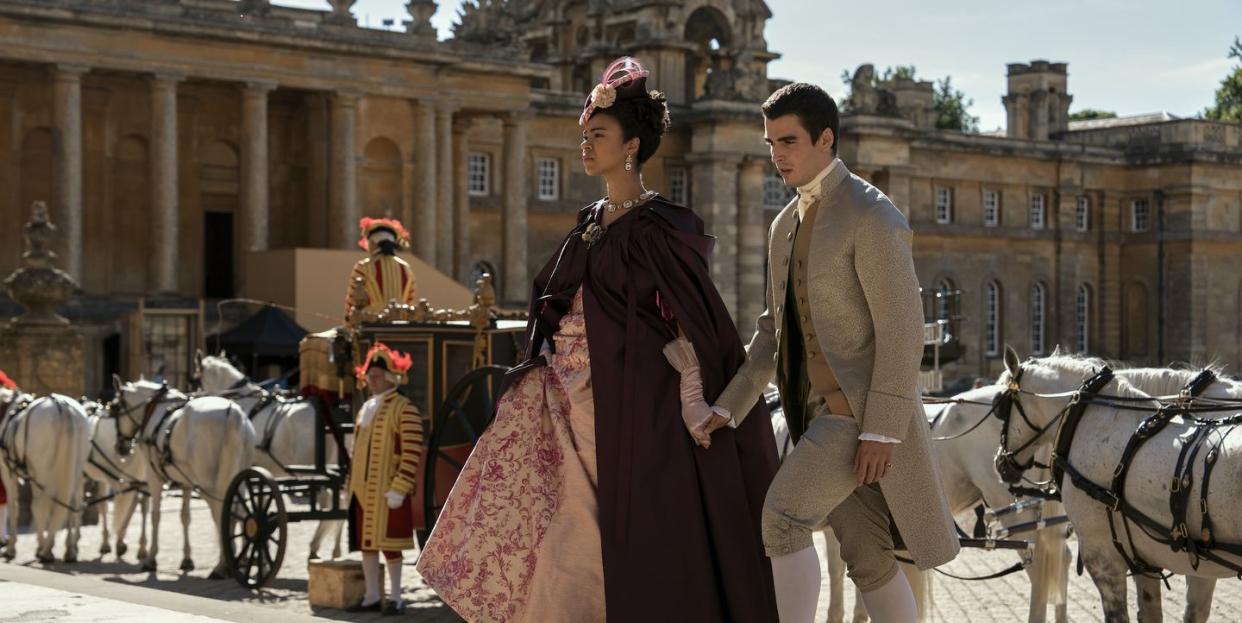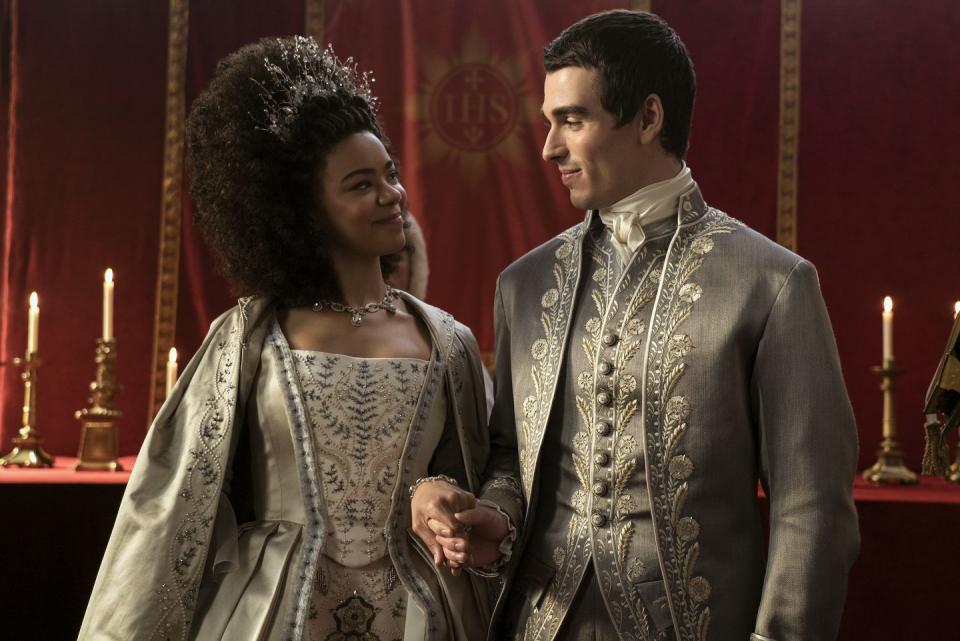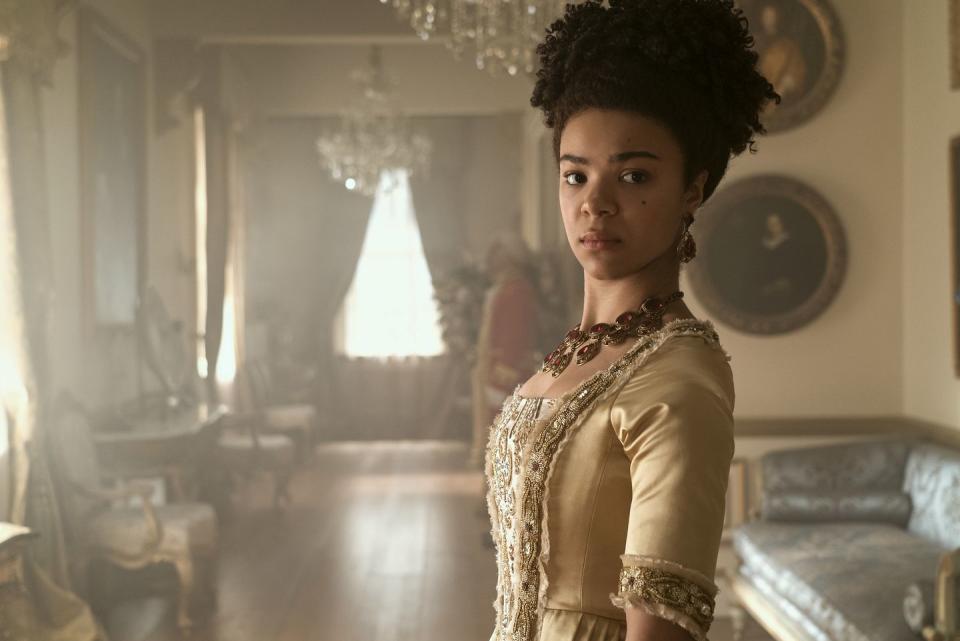Did “The Great Experiment” in Netflix’s “Queen Charlotte” Really Happen?

- Oops!Something went wrong.Please try again later.
- Oops!Something went wrong.Please try again later.
- Oops!Something went wrong.Please try again later.
Netflix’s Queen Charlotte: A Bridgerton Love Story transports viewers to 1761 London, as Sophia Charlotte of Mecklenburg-Strelitz (India Amarteifio) marries King George III (Corey Mylchreest) and swiftly becomes monarch of Great Britain and Ireland. The Bridgerton prequel series chronicles the young king and queen’s early days of marriage, from their first meeting, whirlwind wedding (seriously, it took place within six hours of Charlotte’s arrival in London), and the birth of their first child, George IV.
While the series is based on real royals, the interpretation of Queen Charlotte and King George III’s love story and Georgian-era London is not entirely historically accurate. “Dearest gentle reader, this is the story of Queen Charlotte from Bridgerton,” a title card, narrated by Lady Whistledown, reads at the start of episode 1. “It is not a history lesson. It is fiction inspired by fact.”
The six-episode spin-off centers around “The Great Experiment,” a concept established by Princess Augusta (King George’s mother) and the House of Lords in the premiere episode. Prior to the marriage between Charlotte, a Black woman, and King George III, a white man, the British noble class was entirely white. Their interracial relationship and Charlotte’s role as Britain’s first Black queen signaled a turning point in societal structure, and the “Great Experiment” was the palace’s attempt to desegregate the Ton and grant more land and status to people of color.

Lady Agatha Danbury and her husband, Lord Danbury, are bestowed their titles at Charlotte and George’s wedding in episode 1, and later, are given a new, bigger home by the palace and host the first ball of the season. As the series progresses, Queen Charlotte’s responsibilities as the face of the “Great Experiment” grow more and more evident, as she and Lady Danbury advocate for continued, lasting desegregation of the Ton.
As evident by the diverse aristocracy seen in Bridgerton, which takes place five decades after the events of Queen Charlotte, the “Great Experiment” is considered a success in the Bridgerton universe. “The politics of England in this particular period of time, and the politics of most of the world, were complicated,” executive producer Betsy Beers told Netflix, per Tudum. “And one of the things which Shonda [Rhimes, showrunner] has threaded through the story in this incredibly brilliant way is the idea that the arrival of this woman made it possible for other people of color to rise up through the ranks in English society.” But in truth, racial equality was not achieved as such in 1700s Britain.

Did the “Great Experiment” actually happen?
No, the “Great Experiment” did not happen in real life. Although based on actual monarchs, Queen Charlotte reimagines the events of Georgian-era London. Historic England writes that although there were around 15,000 Black people living in England in the late 18th century, a majority worked in domestic service, “both paid and unpaid.” Slavery wasn’t abolished in the British Empire until 1807, according to the UK Parliament, and Queen Charlotte takes place in 1761.
Some historians think that Queen Charlotte was Black, but her racial identity has never been confirmed. Back in 1997, Mario de Valdes y Cocom, historian of the African diaspora, believed to have found evidence that Queen Charlotte was Black, per PBS Frontline, but again, her genealogy has not been substantiated.
You Might Also Like

